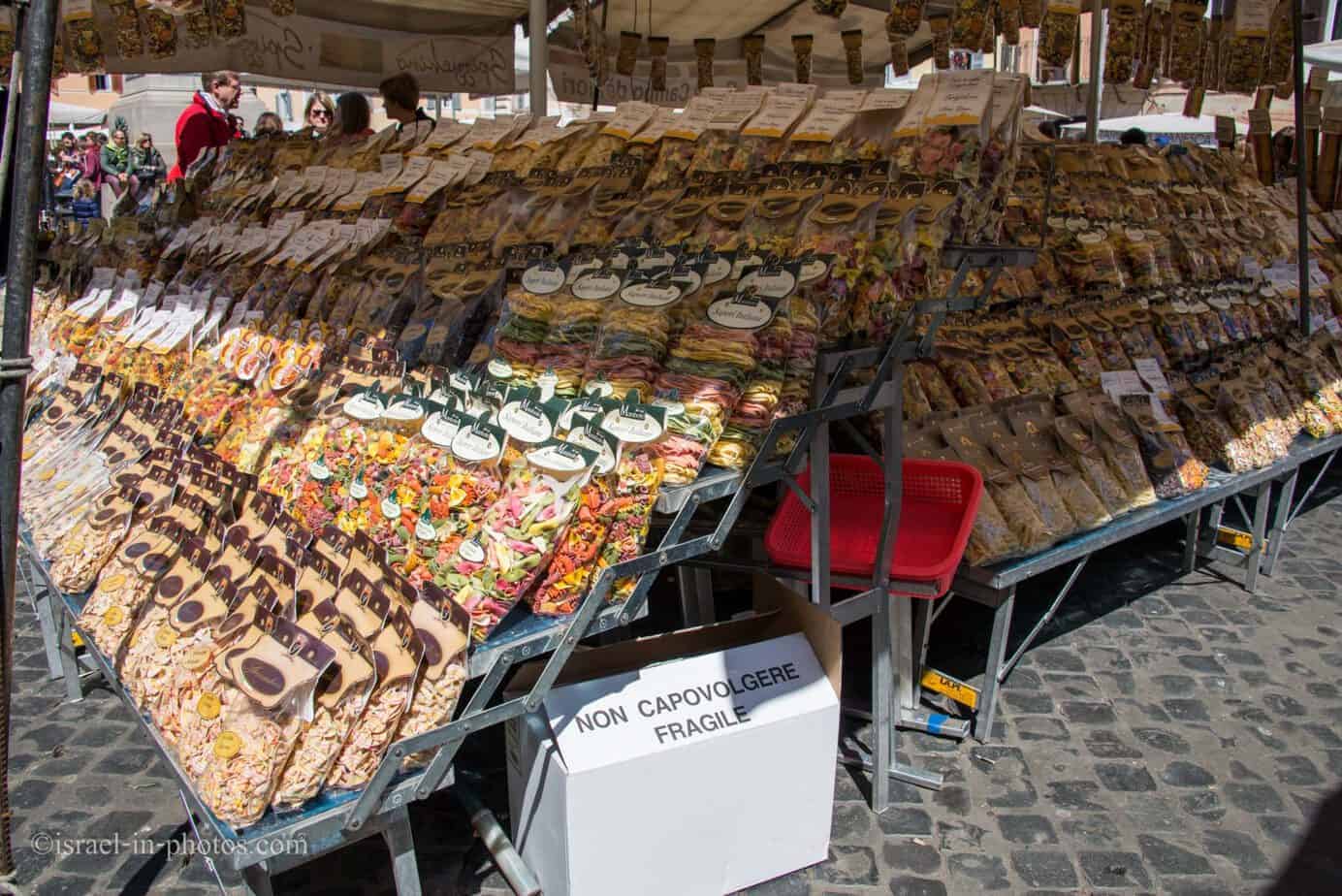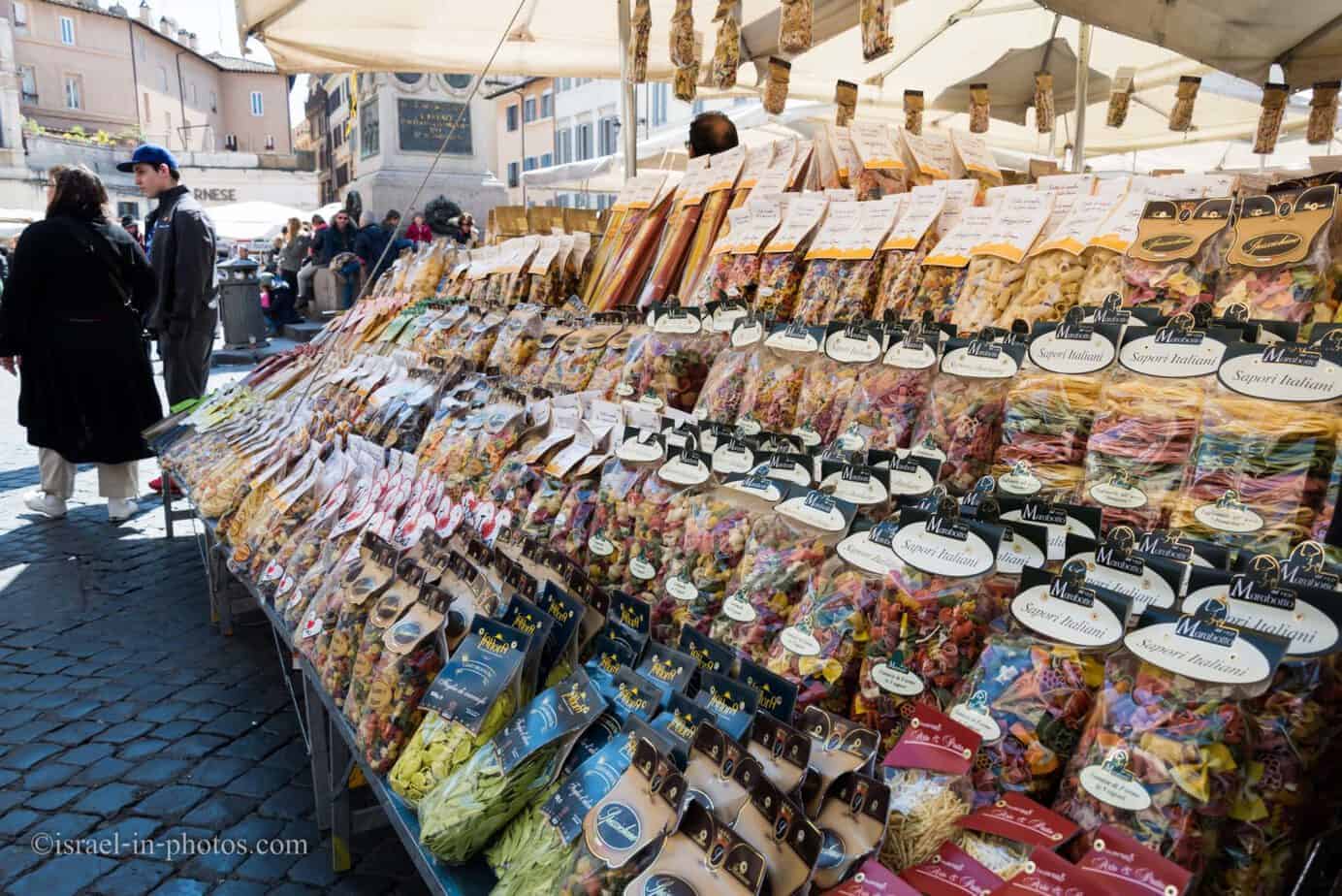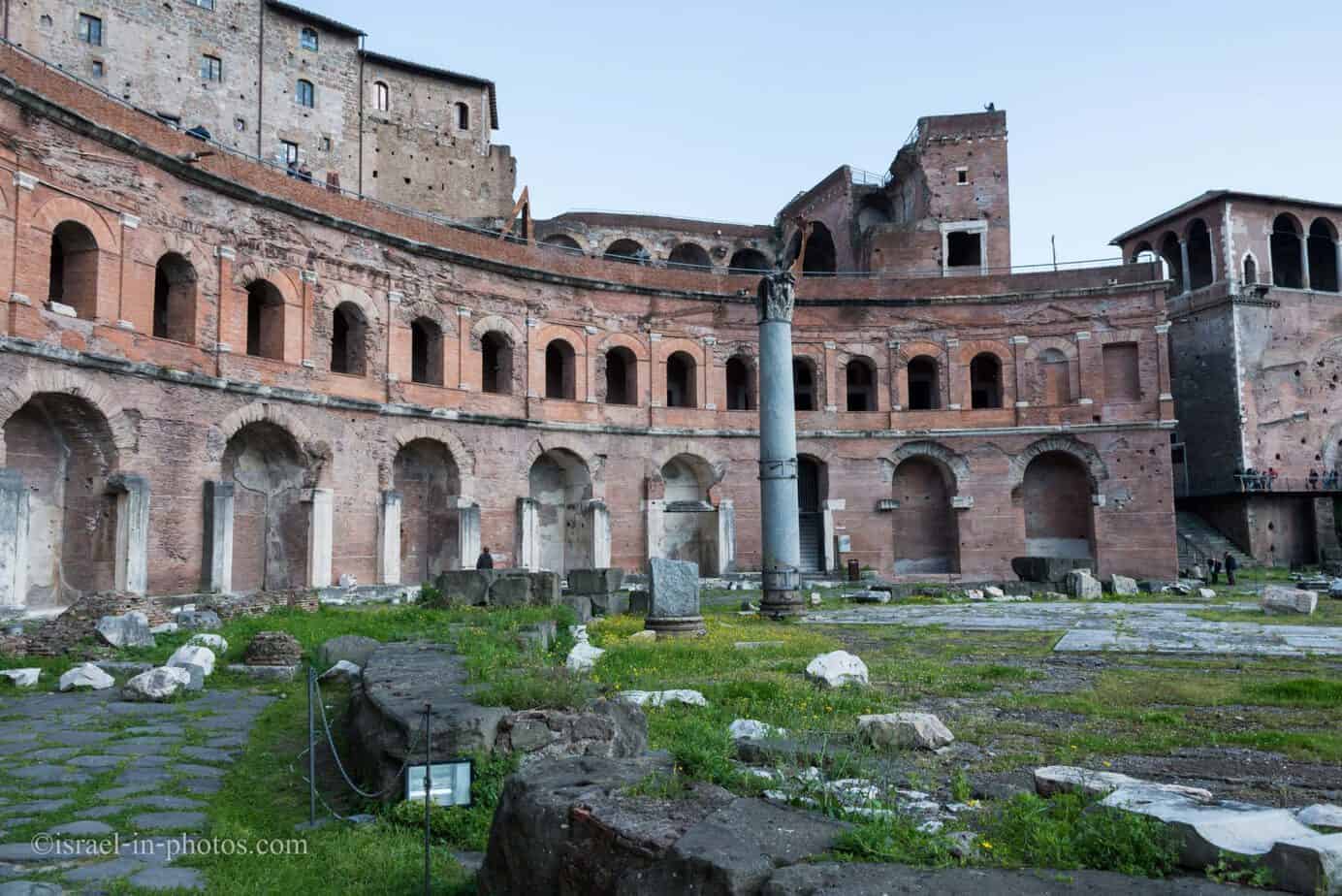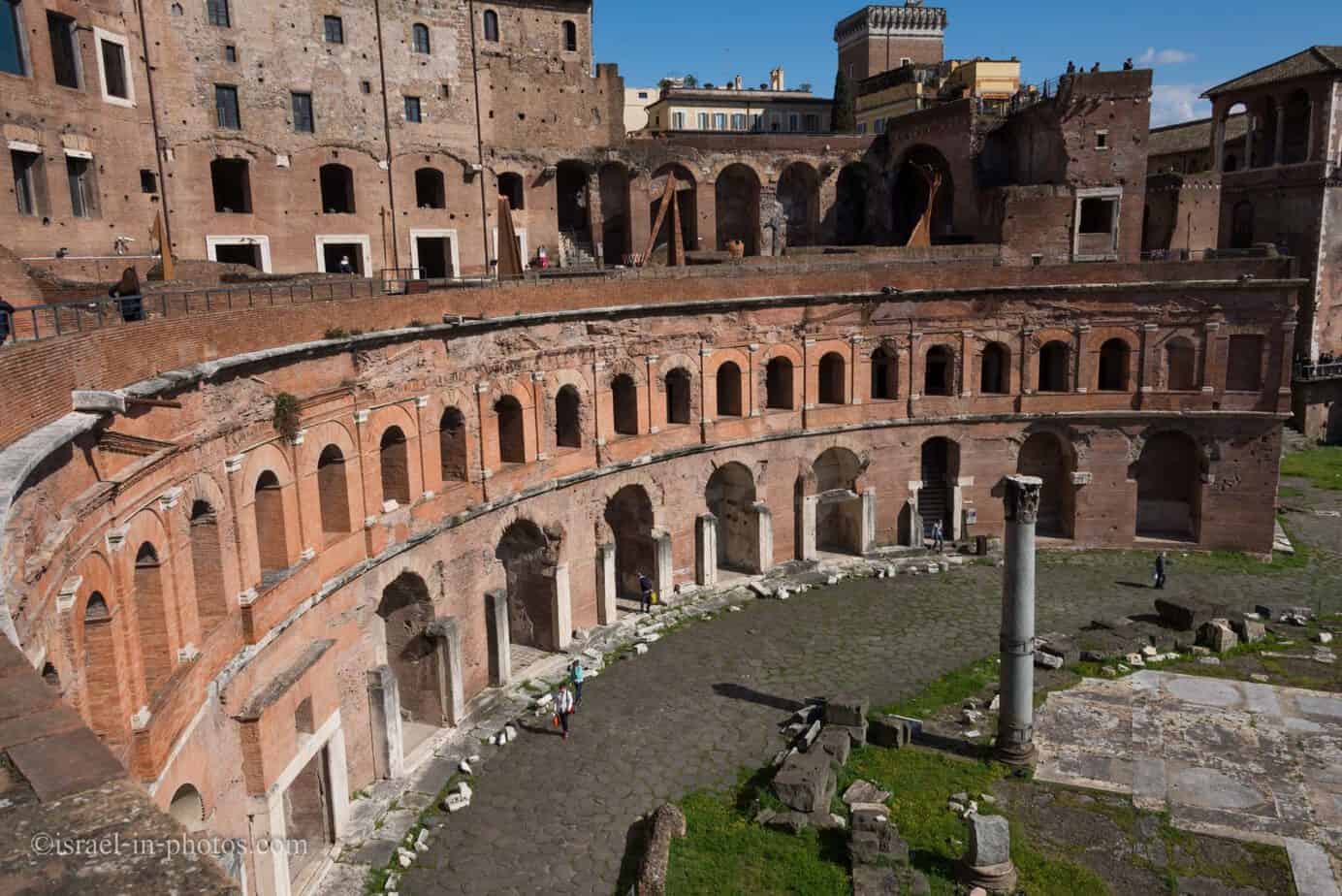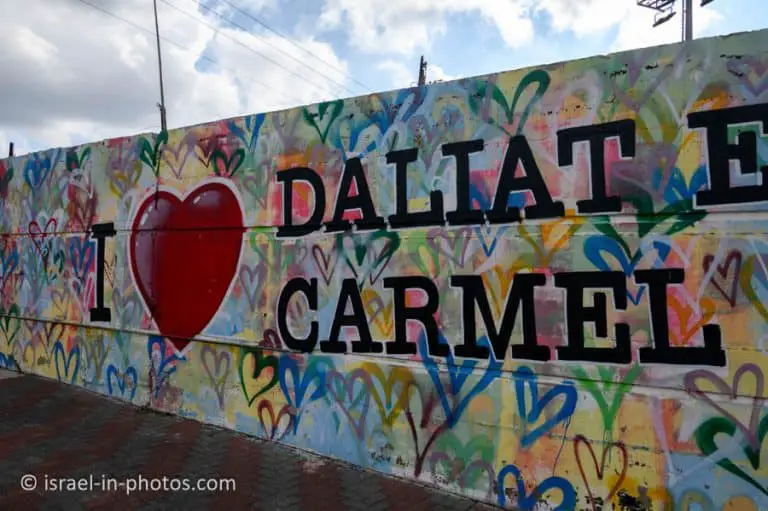Rome day #3 – Saint Peter`s Basilica, Campo de Fiori market, and Trajan`s Market and Forum
Table of Contents
Saint Peter’s Basilica
On the third day we returned to the Vatican, but this time we visited Saint Peter’s Basilica. This photo was made from the end of the queue. As you can see, by 8:30 am the queue runs along half of the square, and by 9 am the queue will run around the whole piazza. The queue moves quite fast and each quarter circle (90 degrees) will take around 20 min.

Pope’s balcony:

As you can see I was bored while waiting in line:
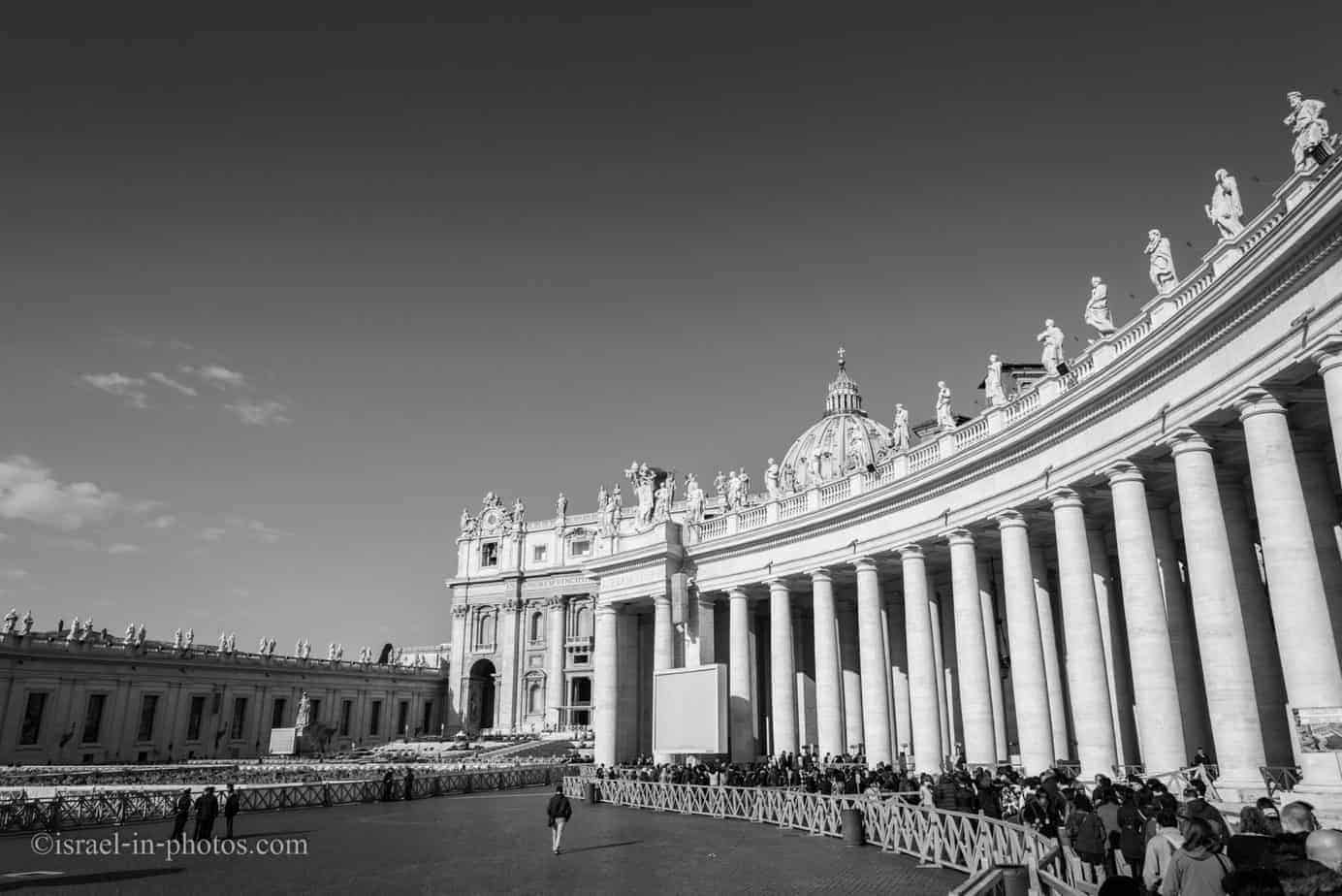
Vatican guard in one of the side entrances:

The entrance to the Basilica is free, but if you want to get to the viewpoint at the top of Saint Peter’s Basilica, you will have to pay. The entrance fee is 5 euros if you do the whole climb on foot and 7 euros if you use the elevator for the first half of the climb. We took the 7 euro tickets and did not regret it since the second part of the climb was quite long (it felt like 15-20 min).
Views of Saint Peter’s Square:
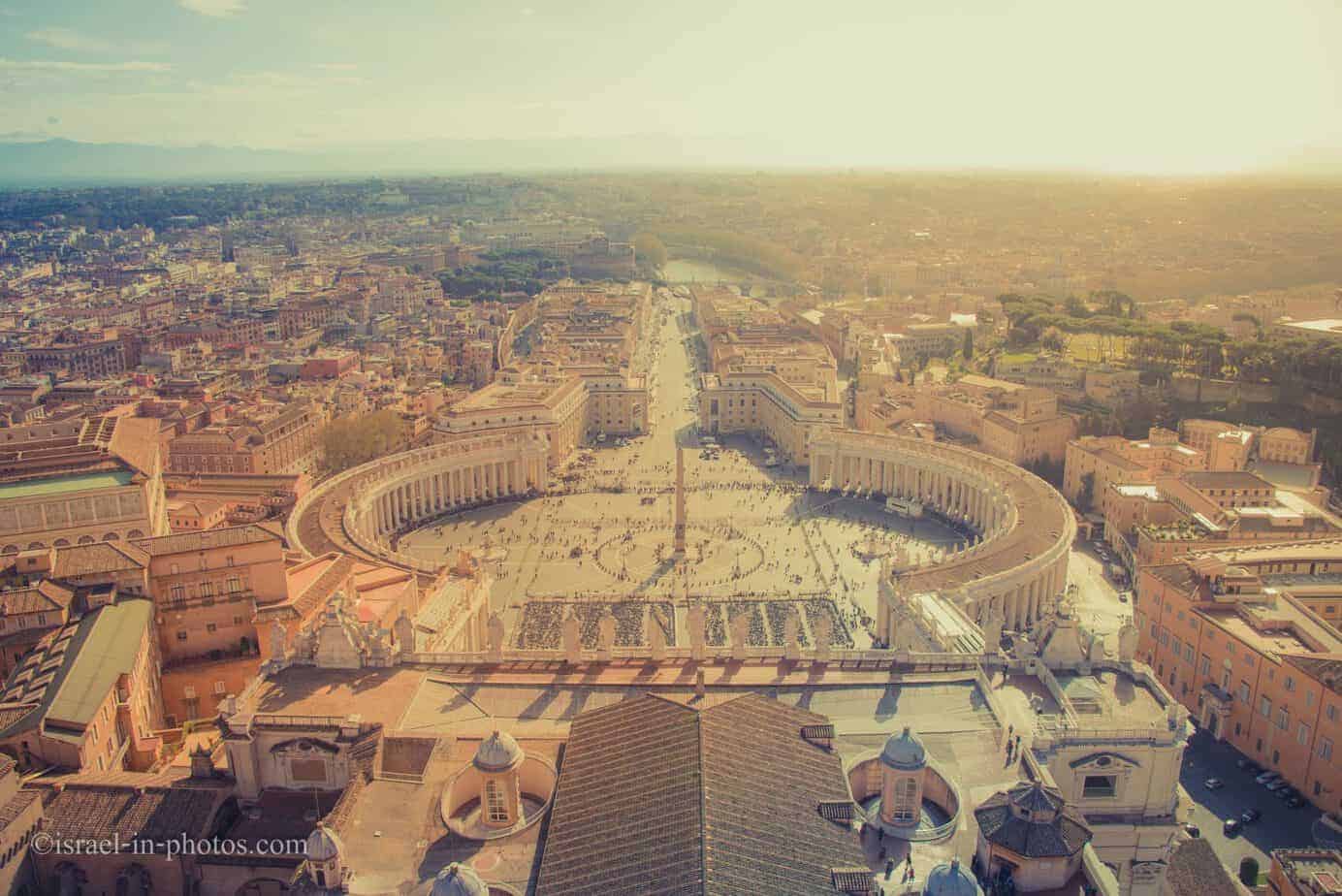

Further ahead you can see Castel Sant’Angelo:

I saw this post office box on our way down (on the roof of the Basilica, reached after one part of the climb):

After the 360 views from the top, we went inside Saint Peter’s Basilica:

Next photo is an attempt to recreate something I saw on the net. It’s an 180 degrees panorama. But not the standard from left to right, it’s from front to back via top. Well they say a picture worth a thousand words, so here it is:

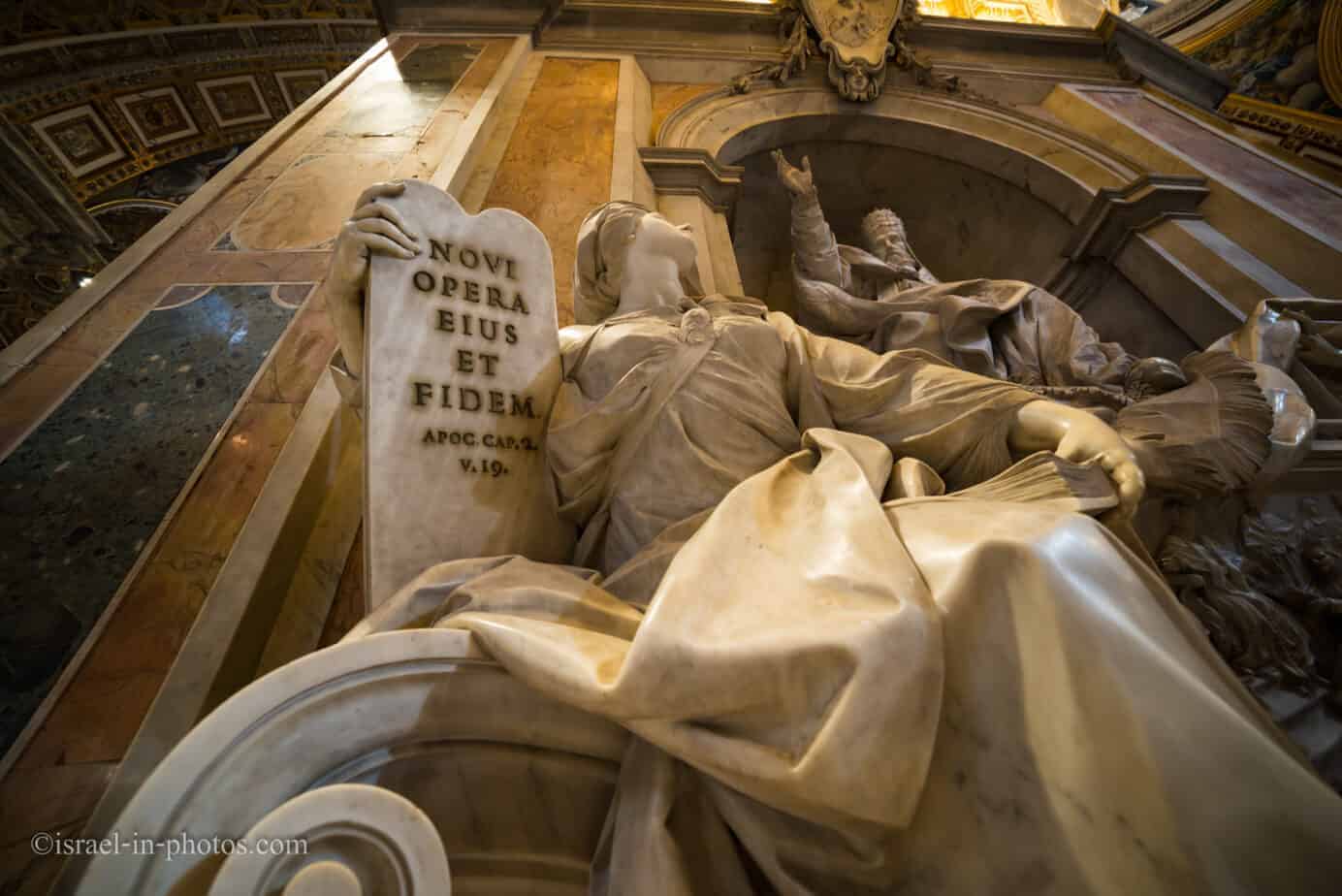
This looks like a beautiful picture:
 but only after approaching it less than 2 meters away I understood it’s mosaic.
but only after approaching it less than 2 meters away I understood it’s mosaic.
The bronze statue of Saint Peter holding the keys of heaven (attributed to Arnolfo di Cambio):
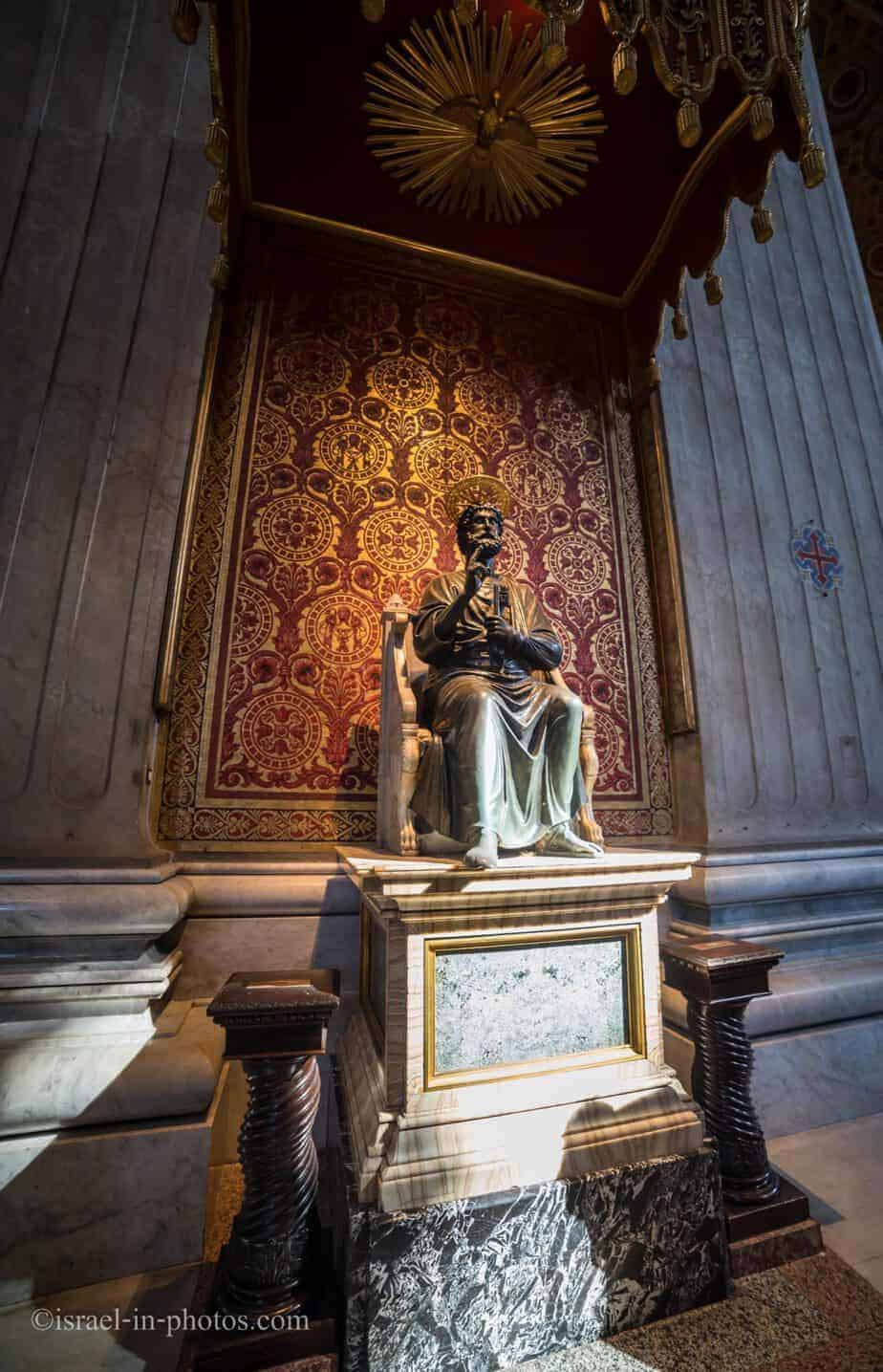
View of the dome and the ceiling:

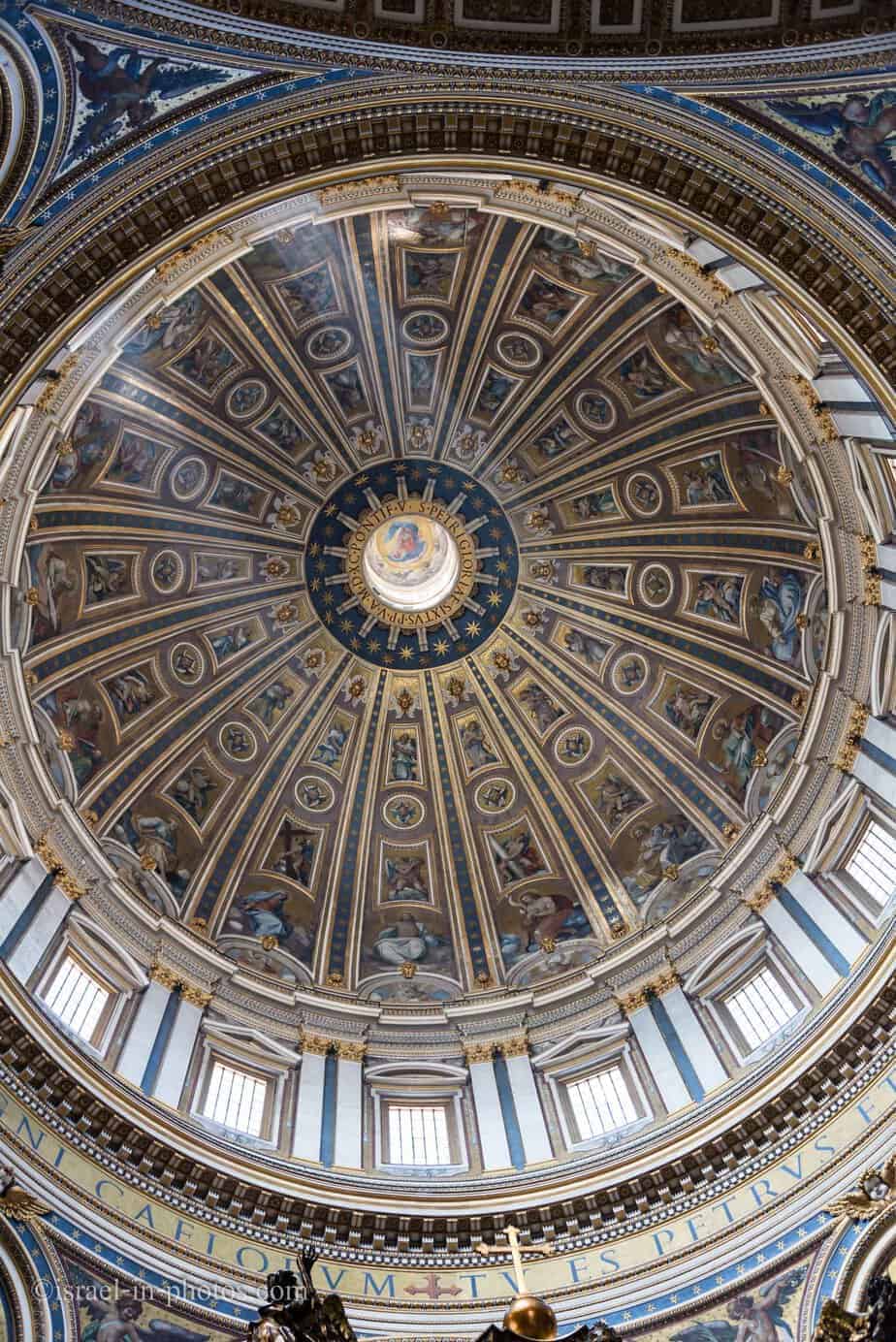

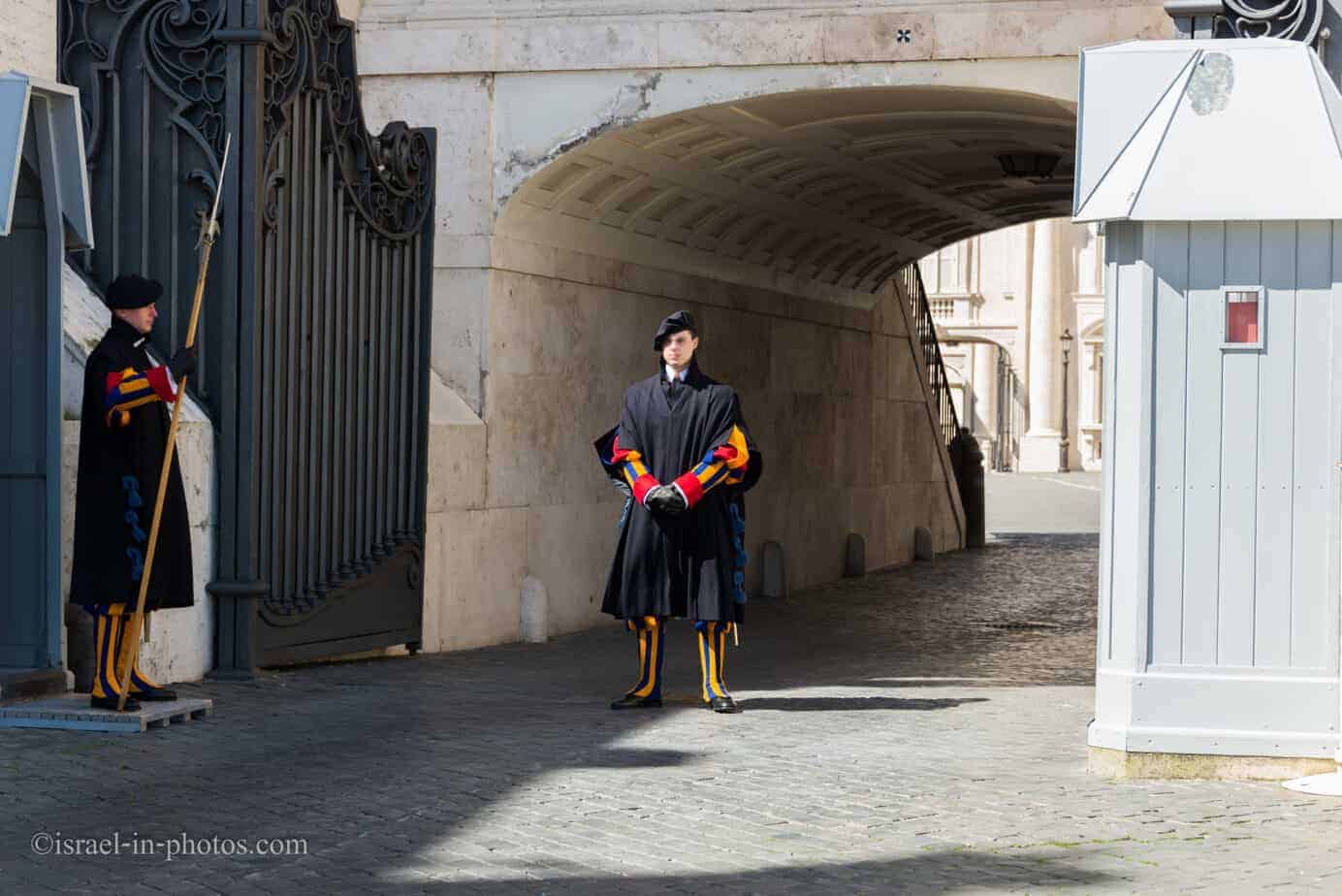
The official dress uniform is of blue, red, orange and yellow with a distinctly Renaissance appearance. Commandant Jules Repond (fr) (1910–1921) created the current uniforms in 1914. While both Michelangelo and a painting of the Pontifical Swiss Guard bearing Pope Julius II on a litter (by Raphael) are often cited as inspiration for the Pontifical Swiss Guard uniform, the actual uniforms worn by those soldiers included a flaring skirt; a common feature in male clothing during the Renaissance.
Nuns have a conversation:

I thought there would be many old & small cars in Rome. But, though there are many small cars, very few of them are old ones. This is one of the few ones I saw:
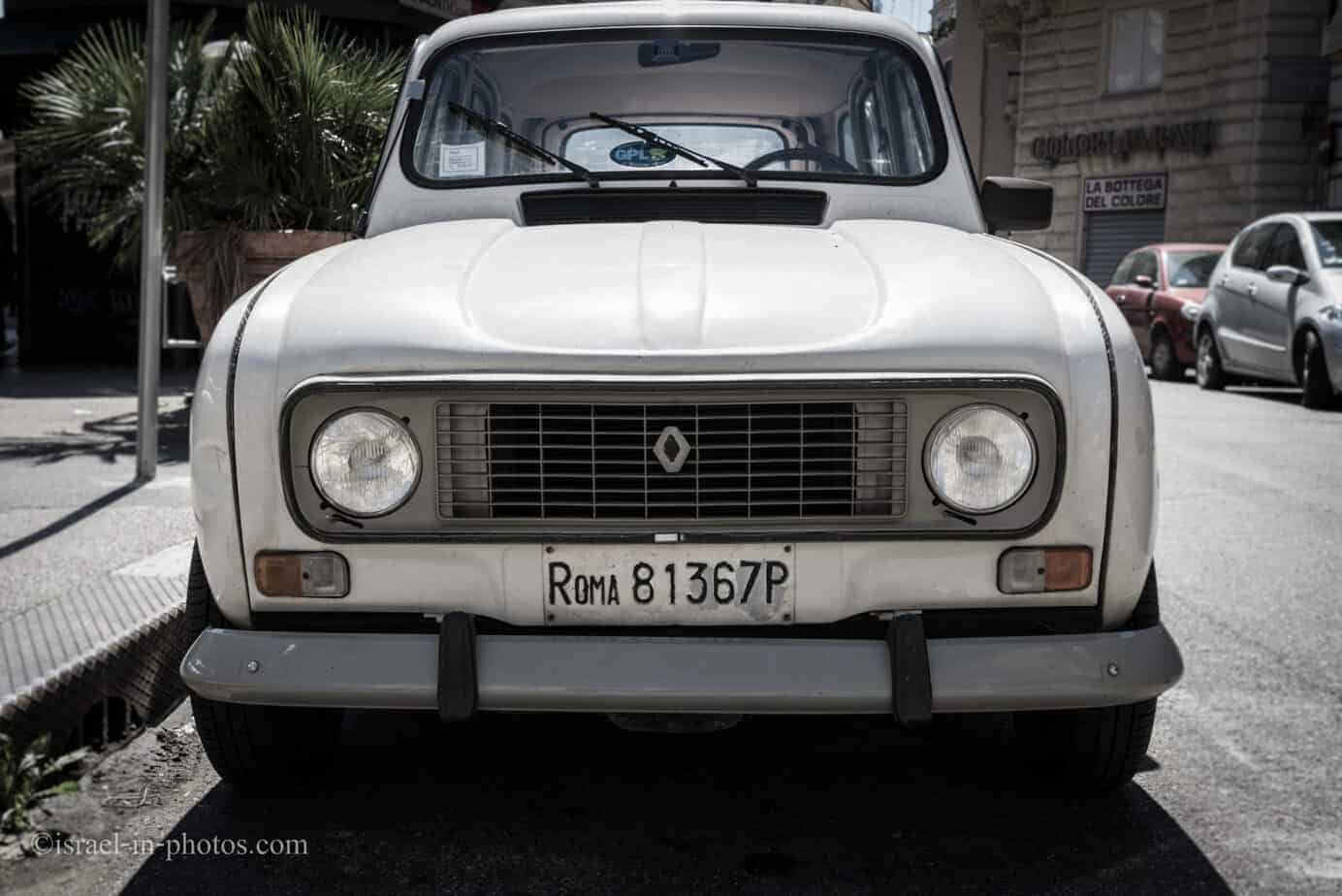
Our next stop was:
Campo de’ Fiori
 Campo de’ Fiori is a rectangular square south of Piazza Navona and during weeks days it holds a semi-touristic market (in the first half of each day).
Campo de’ Fiori is a rectangular square south of Piazza Navona and during weeks days it holds a semi-touristic market (in the first half of each day).
The market is relatively small, and I cannot say that I felt some unique Italian experience. If you are in the area, you can visit it and buy some fruits, but I wouldn’t recommend a special visit.
Our next stop was:
Trajan’s Market & Forum
Trajan’s Market (Latin: Mercatus Traiani, Italian: Mercati di Traiano) is a large complex of ruins in Rome, Italy, located on the Via Dei Fori Imperiali, at the opposite end to the Colosseum. The surviving buildings and structures, built as an integral part of Trajan’s Forum and nestled against the excavated flank of the Quirinal Hill, present a living model of life in the Roman capital and a glimpse at the continuing restoration in the city, which reveals new treasures and insights about Ancient Roman architecture.
Thought to be the world’s oldest shopping mall, the arcades in Trajan’s Market are now believed by many to be administrative offices for Emperor Trajan. The shops and apartments were built in a multi-level structure, and it is still possible to visit several of the levels. Highlights include delicate marble floors and the remains of a library.
View of Monumento a Vittorio Emanuele II from Trajan’s Market:

Nearby you can see Trajan’s Column:

Trajan’s Column is a Roman triumphal column that commemorates Roman emperor Trajan’s victory in the Dacian Wars. It was probably constructed under the supervision of the architect Apollodorus of Damascus at the order of the Roman Senate. It is located in Trajan’s Forum, built near the Quirinal Hill, north of the Roman Forum. Completed in AD 113, the freestanding column is most famous for its spiral bas relief, which artistically describes the epic wars between the Romans and Dacians (101–102 and 105–106). Its design has inspired numerous victory columns, both ancient and modern.
Here is a closeup of the column:

From there, we moved in the direction of our hotel.
Here is a photo of one of the churches on the way:
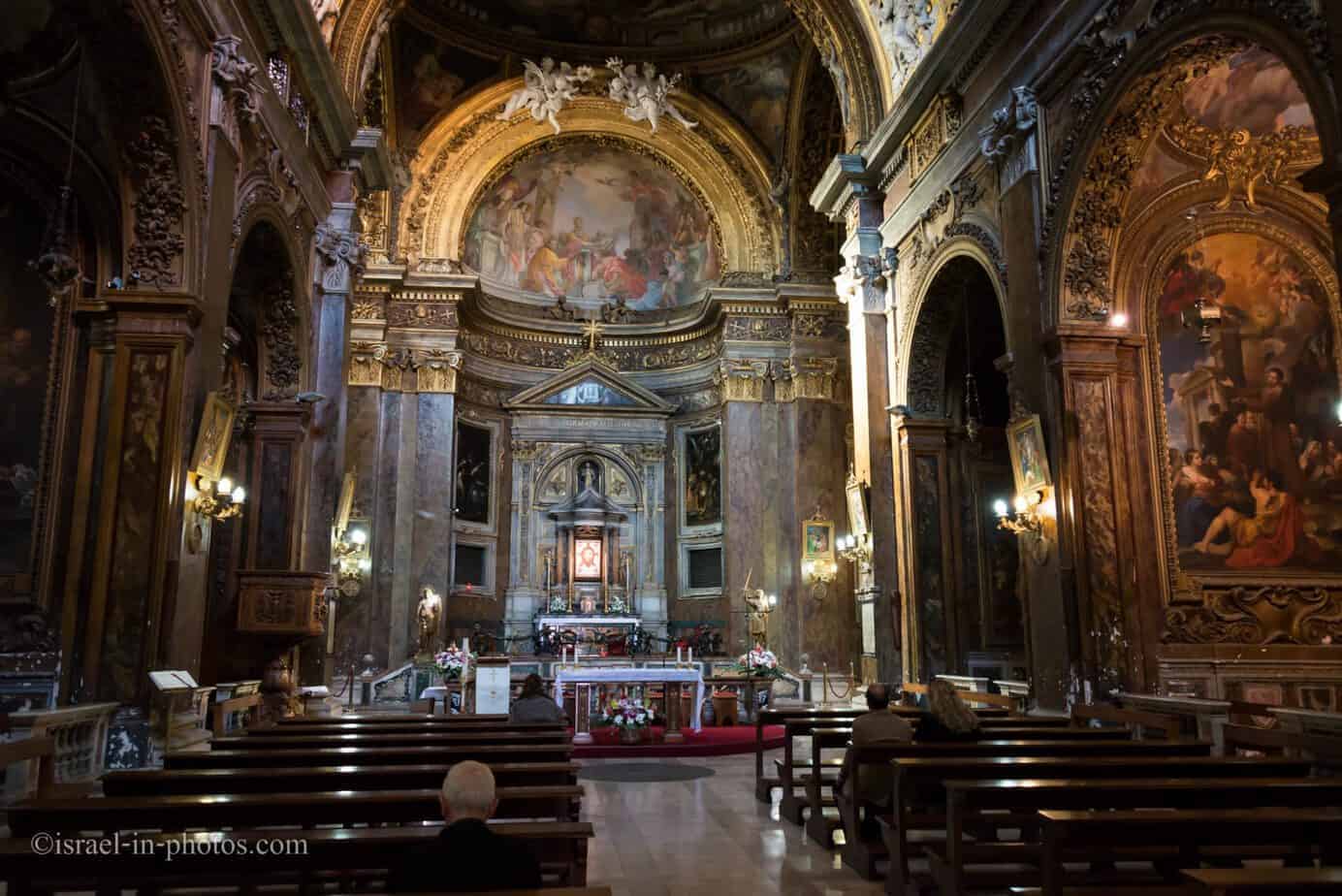
On our way, we visited Trevi Fountains, but it is under reconstruction, and you can barely see anything.
When we reached Spanish steps, the buildings on the top were also under reconstruction. But as you can see they put an image of the building itself on the cover:

Piazza del Popolo at dusk:
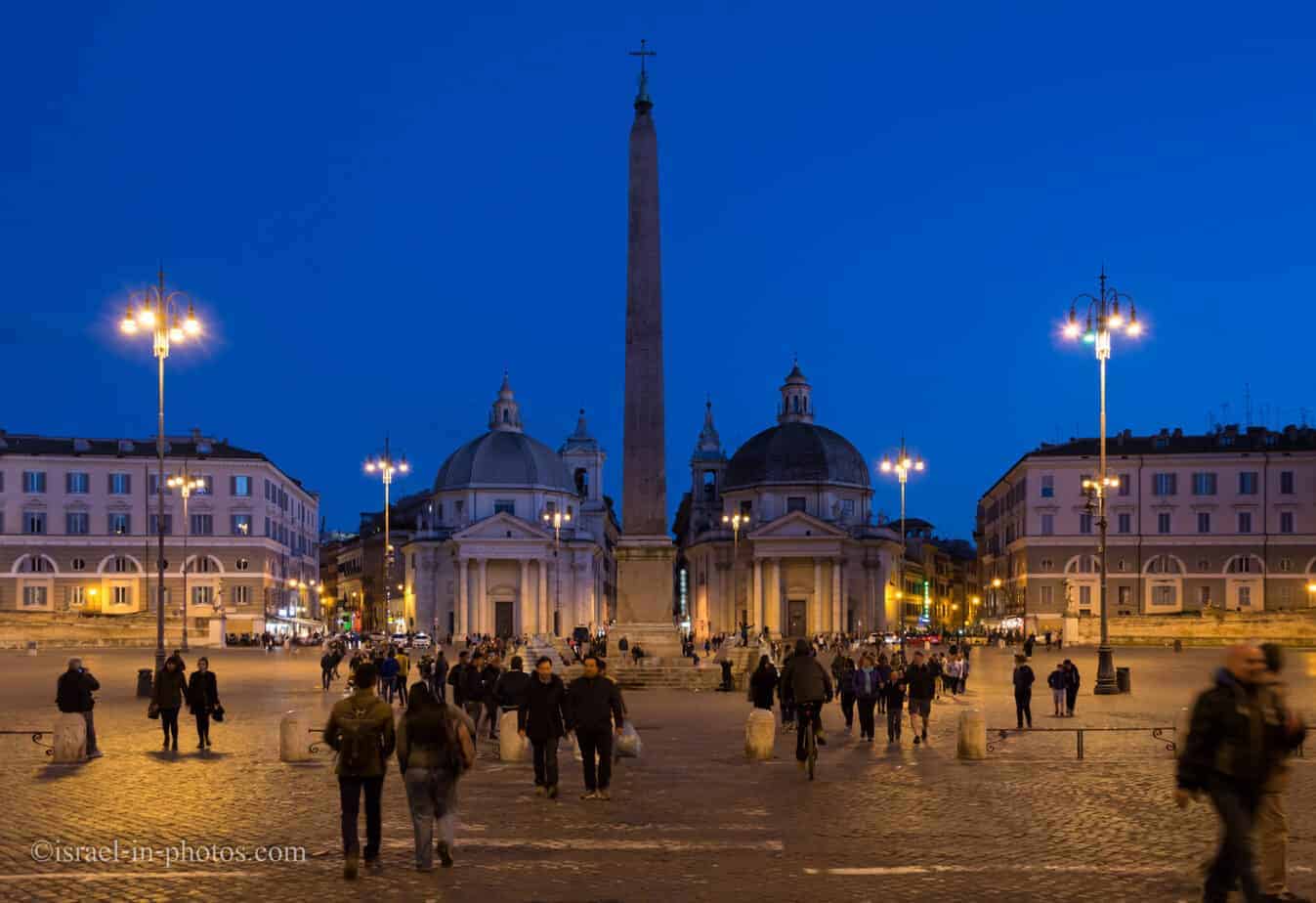
That’s all for today, and see you on day #4!
For a map of all attractions and overview of all days see Five days in Rome.
Stay Tuned!
Additional Resources
Here are several resources that I created to help travelers:
- Trip Planner with Attractions and Itineraries is the page that will help you create your perfect travel route.
- What is the Best Time to visit Israel? To answer this question, we will consider the weather, prices, holidays, festivals, and more.
- Information and Tips for Tourists to Israel will answer the most common questions tourists have about Israel (including safety, passports, weather, currency, tipping, electricity, and much more).
- Israel National Parks and Nature Reserves include a complete list, top ten, map, tickets (Israel Pass, Matmon, combo), and campsites.
- If you are looking for things to do, here are the pages for Jerusalem, Tel Aviv, Haifa, Sea Of Galilee, Akko (Acre), Eilat, Nazareth, Safed (Tzfat), and Makhtesh Ramon.

